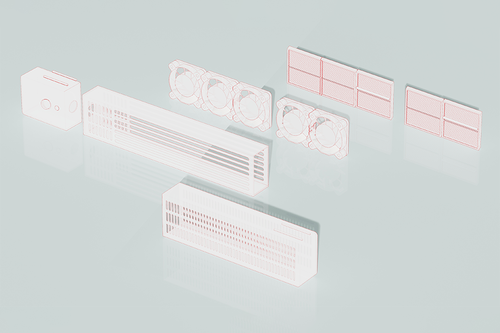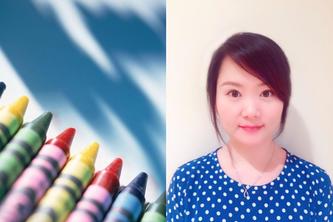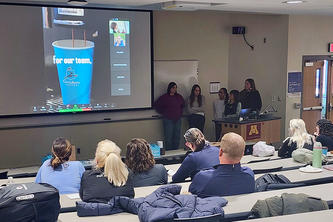
Innovation starts with new challenges and fresh perspectives, a concept well known to both the University of Minnesota College of Design’s Product Design program and Andersen Corporation. This notion formed the basis of a recent collaboration when product design seniors worked directly with Andersen Windows and Doors to develop solutions for “bringing the outdoors in.”
The idea arose from the trend of merging indoor and outdoor spaces as well as COVID-era concerns about getting enough fresh air inside buildings, says Ben Goebel of Andersen’s Research Development and Innovation team.
But catching a breeze isn’t always as easy as just opening a window. Students were asked to consider one of four key concerns—security, allergies, accessibility, or noise—and were tasked with designing a fully functional window technology prototype that addresses the chosen concern for tenants living in apartments, assisted living, or dorm-type buildings. The student with the best all-around product would win a $1,000 prize.
“The design process begins with user and market research,” says Assistant Professor Carlye Lauff. “Students had to look up materials, determine what products already exist, and interview their target audiences to narrow the scope of their projects and generate ideas.”
Students then presented five initial concepts and three mockups to the Andersen team, using feedback to further refine their designs into one completely functional prototype.
Rachel Davel (Product Design ’21), the winner of the $1,000 prize, focused her project on improving air quality and long-term health for families living in dense urban environments. Her initial research revealed that people have been affixing air filters to box fans and propping them in their windows to provide air influx without pollution. Building off this idea, Davel designed a minimalist, adjustable window fan with two-way filters to more effectively purify the air.
Davel expressed the value of putting her product design skills to the test with a real client.
“Learning how to step outside my comfort zone and get familiar with a topic I don't have experience in is very important, since most work as a product designer is prompted by clients,” says Davel.
To Andersen’s Research Development and Innovation team, the students’ inexperience is an opportunity for new perspectives. “These students are not window and door industry experts, and so have a very different view of possibilities for our product and for our customers. Our team gets a lot of energy and new ideas from [them], as well as a closer look at future interns or full-time hires,” says Goebel.
Not only did the partnership give students a real-world challenge, it offered them mentoring and guidance from experienced engineers and gave new graduates a foot in the door to the larger industry.
The industry connections and project experience also felt timely to students in another way.
“We [have] all been dealing with the pandemic for over a year. Designing around increasing airflow and how that can positively influence an individual's health felt very relevant. It was a reminder that as designers we have a responsibility to use our skills to help others,” says Davel.
- Categories:
- Architecture and Design





